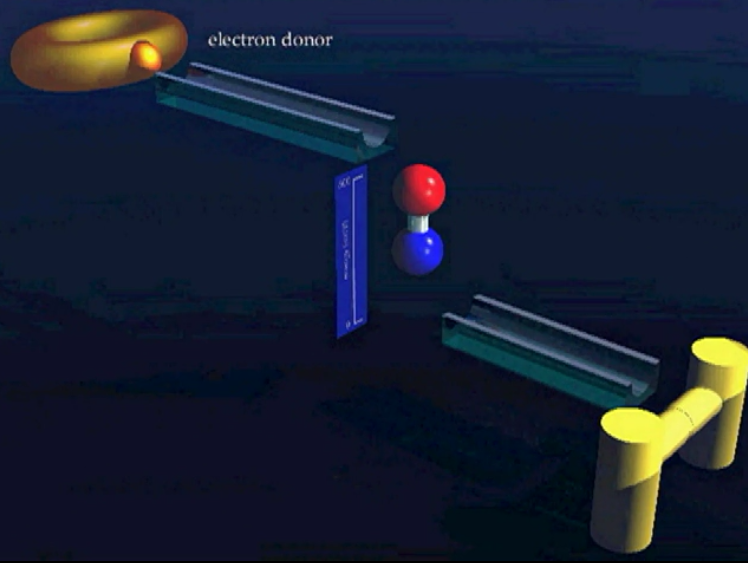OK, great, we smell vibrations. How? All right?
好吧,我們聞到的是震動。怎么聞到呢?
Now when people ask this kind of question, they neglect something, which is that physicists are really clever, unlike biologists.
當人們問這個問題的時候,他們忽略了一些事情,物理學家都是很聰明的,不像生物學家。
And the two of them...this is a joke. I'm a biologist, OK? So it's a joke against myself.
這兩類人……這是玩笑話。我是生物學家,好不好?這是一個自嘲的玩笑。
Bob Jacklovich and John Lamb at Ford Motor Company, in the days when Ford Motor was spending vast amounts of money on fundamental research,
福特汽車公司的鮑勃·捷克洛維奇和約翰·蘭姆在福特公司花大手筆進行基礎研究的時候,
discovered a way to build a spectroscope that was intrinsically nano-scale.
發現了制造納米級分光鏡的方式。
In other words, no mirrors, no lasers, no prisms, no nonsense, just a tiny device, and he built this device.
換句話說,沒有鏡片,沒有激光,沒有棱鏡,沒有廢話,只是一個很小的設備。

And this device uses electron tunneling.
他們用電子貫穿制造出這樣的儀器。
Now, I could do the dance of electron tunneling, but I've done a video instead, which is much more interesting. Here's how it works.
我其實可以給你們演示電子貫穿的過程,但是我做了一個視頻,這樣更有意思一些。是這樣的。
Electrons are fuzzy creatures, and they can jump across gaps, but only at equal energy.
電子是糊里糊涂的家伙,它們可以越過間隙,但只有在能量相同的情況下。
If the energy differs, they can't jump.
如果能量不同,它們就跳不了。
Unlike us, they won't fall off the cliff.
但是和我們不同,它們不會從懸崖掉下去。
OK. Now. If something absorbs the energy, the electron can travel.
好吧。現在。如果有什么東西把能量吸收了,電子就可以飛馳了。
So here you have a system, you have something -- and there's plenty of that stuff in biology -- some substance giving an electron,
現在你們已經了解了這個體系,要是有生物界有很多這樣的東西,要是有一些物質可以提供電子,
and the electron tries to jump, and only when a molecule comes along that has the right vibration does the reaction happen, OK?
電子想要越過間隙只有在一個有匹配震動的分子出現時,反應才會發生。
This is the basis for the device that these two guys at Ford built.
這是福特公司那兩個制作的儀器的基本原理。











